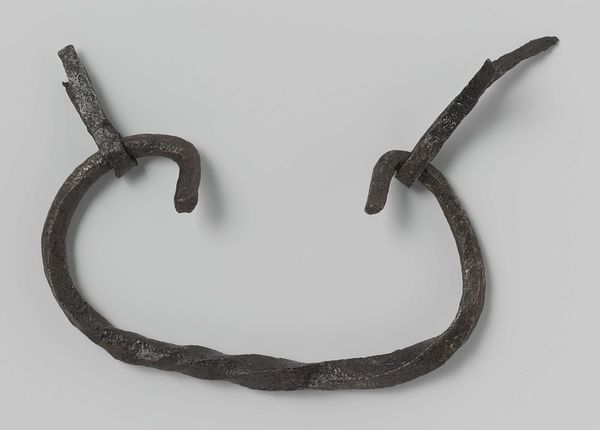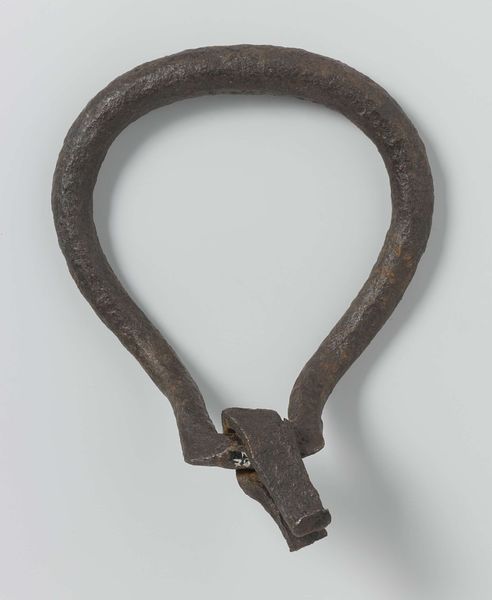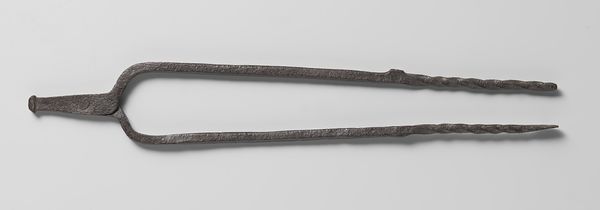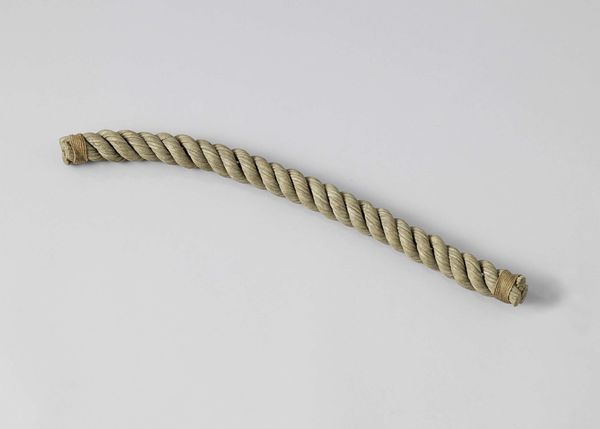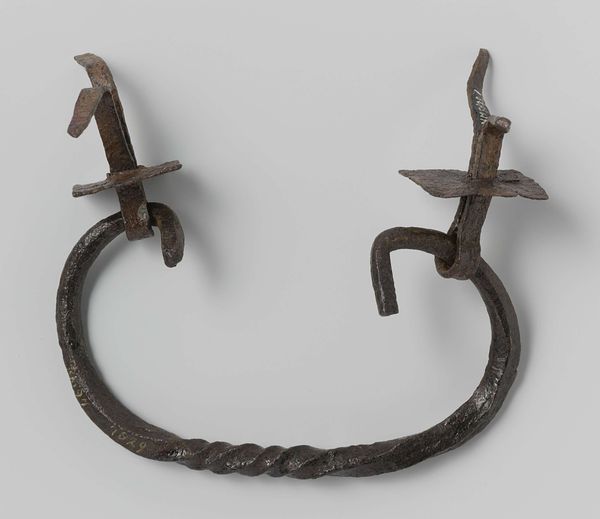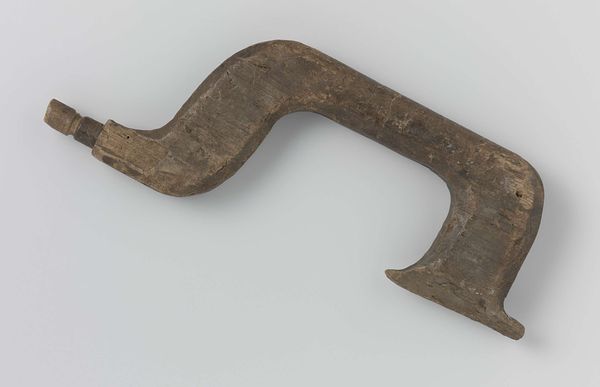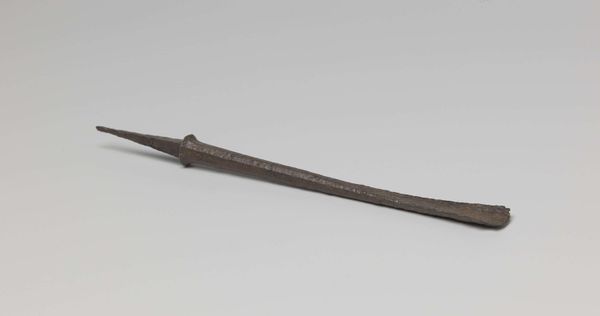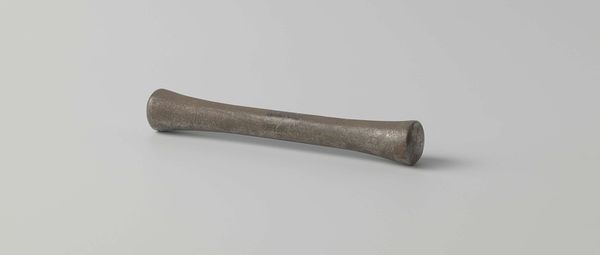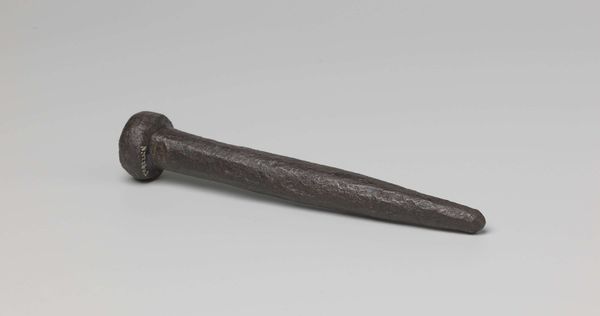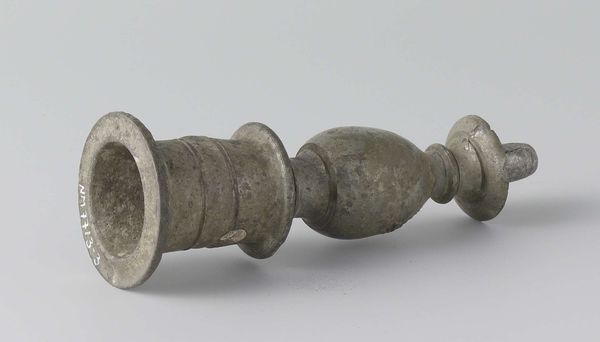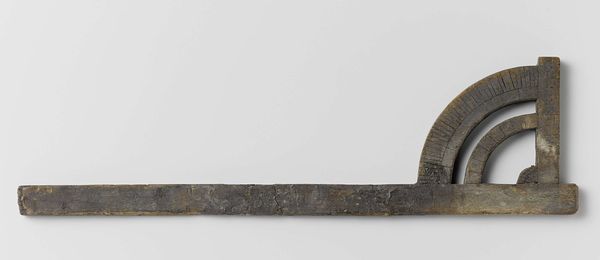
mixed-media, metal, photography, wood
#
mixed-media
#
metal
#
form
#
photography
#
line
#
wood
#
northern-renaissance
#
realism
Dimensions: length 175 cm, width 2.1 cm, length 14.5 cm, width 4.6 cm, depth 6.1 cm, length 15 cm, width 4.4 cm, depth 5.9 cm
Copyright: Rijks Museum: Open Domain
Editor: This photograph, “Ship’s essentials,” was created around 1590 to 1596 by an anonymous artist. The medium seems to be a combination of mixed media, metal, and wood; it currently resides in the Rijksmuseum. It features a rather rustic rope ending in two metallic hooks. How might we interpret the forms at play here? Curator: Observe how the interplay of textures guides the eye. The coarse, winding rope contrasts sharply with the smooth, solid metal of the hooks. This juxtaposition is central to the work. Note, too, how the line, primarily defined by the rope itself, bends and curves in contrast with the right angles of the hooks. Do you see a dialogue here between the organic and the constructed? Editor: I do. The line of the rope feels very natural and freeform, versus the rigidity and man-made nature of the hooks. Does this relationship create a tension? Curator: Precisely. That tension between the natural and the manufactured is a key structural element. It draws us in, prompting questions about utility and design. How does the line lead your eye through the composition? Editor: Well, the winding nature of the rope leads my eye toward the hooks at each end. The rough texture makes me focus more on that path. Curator: Notice the subtle tonal variations across the surface, created by light and shadow. They accentuate the form and enhance our understanding of its materiality. How do those affect your perception of depth? Editor: The shadows really highlight the three-dimensionality. Without them, it would feel much flatter, and the textures wouldn't pop as much. Curator: Indeed. By analyzing such intrinsic qualities – form, line, texture, tonality – we decode the essence of the piece, understanding its power through the considered arrangements of material properties. Editor: I hadn’t considered just how much could be communicated through the juxtaposition of these elements. Curator: Formal analysis provides us with tools to decode artistic expression, enabling us to see art from diverse, illuminating perspectives.
Comments
rijksmuseum about 2 years ago
⋮
Pulleys, boathooks and rope, all these items were recovered on Nova Zembla. The rope in particular is still surprisingly intact. A piece of the hull of Barentsz’ ship has also been preserved and is now kept in St Petersburg.
Join the conversation
Join millions of artists and users on Artera today and experience the ultimate creative platform.
